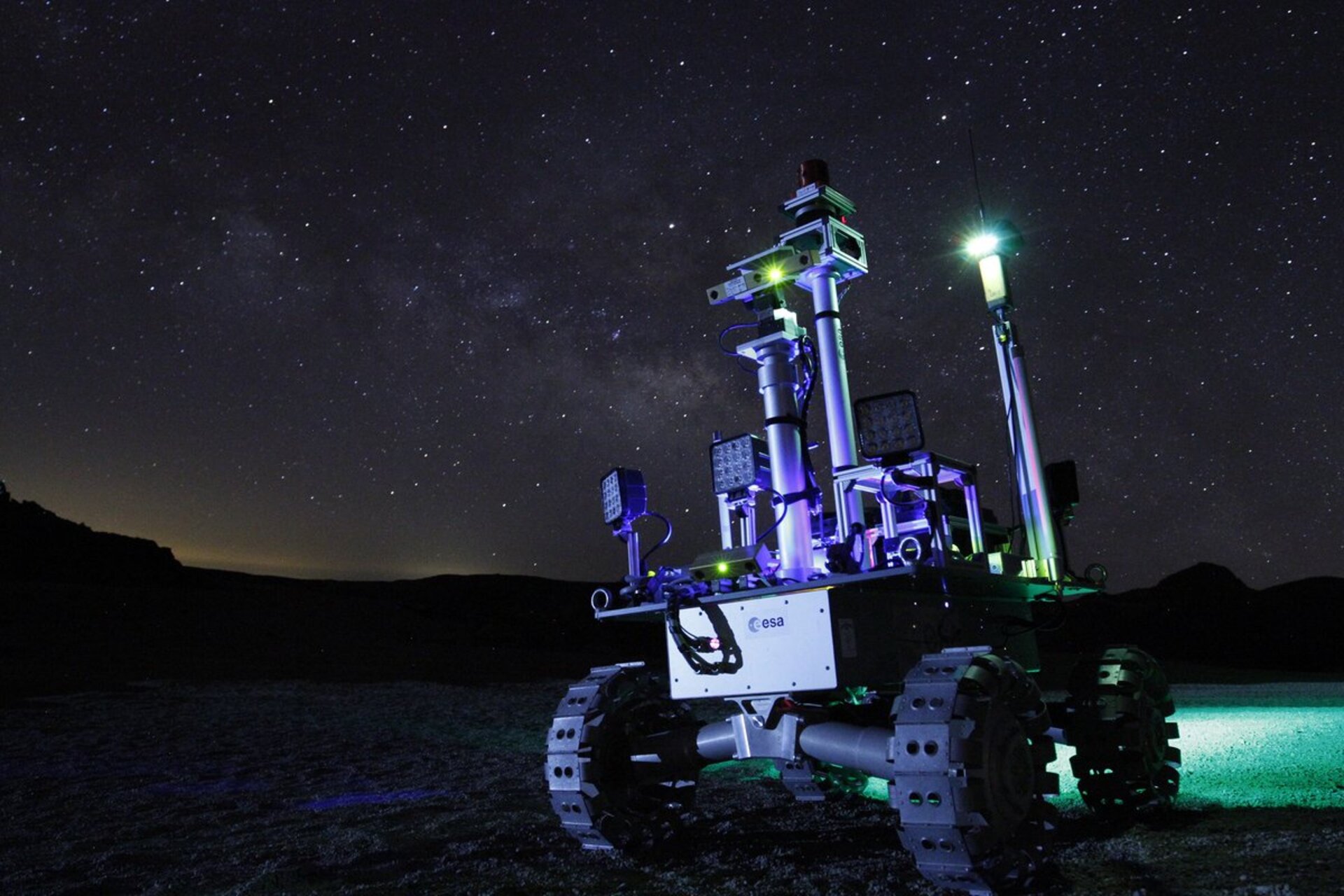Autonomous software makes planning easy
A GSTP Element 2 activity with GMV (ES) built a new software, GOTCHA, to encourage autonomy and automation of space missions, such as planetary robotic exploration.
GOTCHA, seen above being tested on the RAT (Rover Autonomy Testbed) platform at ESA, allows operators to give a rover or robot a goal such as “do survey X” - instead of instructions for how to do survey X. The robotic system can then decide for itself how it will reach that goal.
With this method, the system takes into consideration the planning – such as the best use of resources – and allows for dynamic re-planning, where the system can change the original plan in case new goals need to be allocated or if some errors arise during execution.
The software was able to achieve this by using a timeline-based approach. This meant the robotic system could react according to environmental or internal events and accommodate new goals. The team combined this with a very efficient planner (OPTIC) that produces actions with time tags associated to them.
The planner allows dynamic reasoning per goal by taking into account new goals as they arrive or discarding goals that are no longer needed when generating new plans or when re-planning. This dynamic goal reasoning will allow the system to increase its level of autonomy in case humans so decide. The system is also able to work with goals of varying levels of priority, trying to accommodate all of them in the plan if possible, or automatically discarding the lowest priority ones if not.
By the close of the activity the team had built an architecture for on-board controllers of future space robotic systems, a prototype implementing the architecture based on an existing platform and a methodology for the development of autonomous robots. While the methodology relies on a state-of-the-art system so is not mature yet, future developers have tools and techniques for developing autonomous controllers and the project is already being extended through an activity called ERGO.
This GSTP Element 2 activity, G627-062MM, was presented in the November 2018 SET-FPDs.


